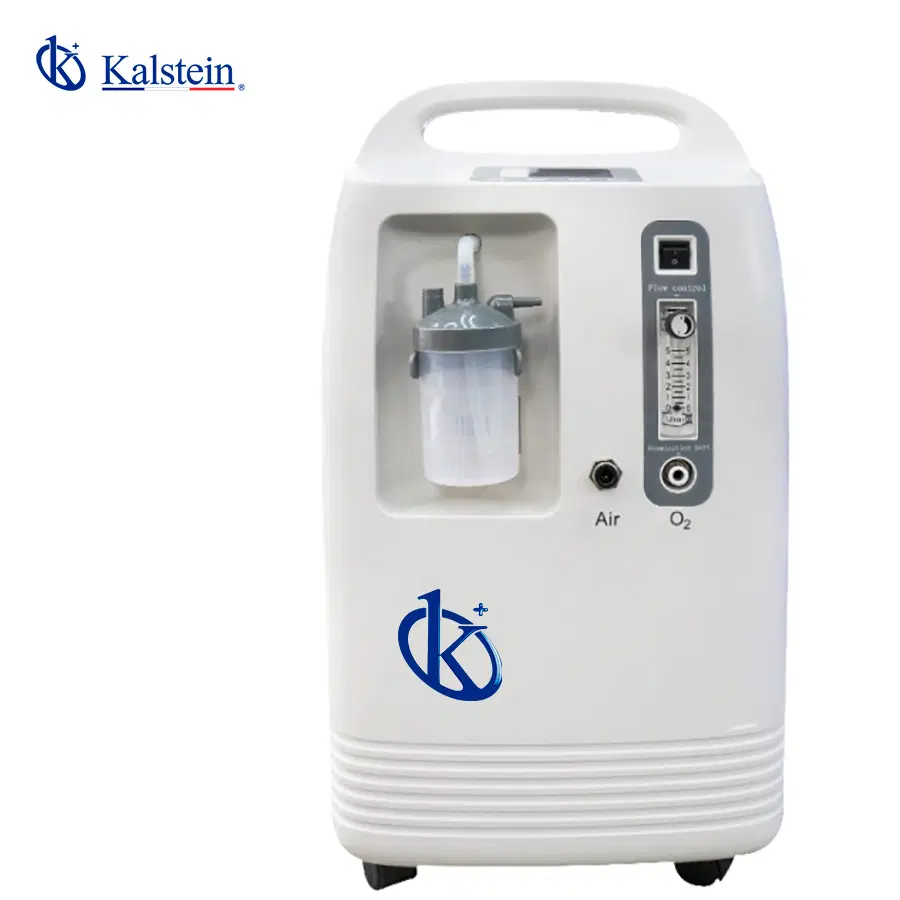Stationary oxygen concentrators are essential devices for those who require oxygen therapy at home. Among their benefits, the ability to provide a continuous supply of high-purity oxygen stands out, significantly improving users’ quality of life. These devices are ideal for individuals with chronic lung diseases, such as COPD or pulmonary fibrosis, as they ensure patients receive the necessary oxygen to maintain optimal blood levels.
In addition to the convenience of having a constant oxygen supply, stationary concentrators are generally more cost-effective in the long run compared to traditional oxygen tanks. They do not require frequent refills, eliminating the stress and cost associated with the logistics of transporting and storing tanks. This feature makes them a sustainable and convenient option for home oxygen therapy.
We understand that you need equipment that delivers maximum value to your laboratory. We invite you to visit https://kalstein.de/category-product/medical-line/oxygen-concentrator/, to immerse yourself in our universe of cutting-edge technology equipment. Our prices are competitive and accessible, we combine the convenience of online shopping with the guarantee of an exceptional product. Because you deserve the best, we create and offer top-tier laboratory equipment. Make your choice today, where science comes to life. https://kalstein.de/
Unique Features of the Stationary Oxygen Concentrator
One of the most notable features of stationary oxygen concentrators is their ability to produce high-purity oxygen. They use advanced filtration and gas separation technologies to extract oxygen from the ambient air, ensuring patients receive an oxygen concentration above 90%. This purity is crucial for the effective treatment of various medical conditions.
Another unique feature is the durability and energy efficiency of these devices. They are designed to operate 24/7 without interruptions, which is essential for patients who need continuous oxygen. Moreover, many modern models are energy-efficient, reducing electricity consumption and contributing to environmental sustainability.
Medical Innovation in Oxygen Therapy
Medical innovation has made stationary oxygen concentrators more compact, quiet, and user-friendly. These technological advances have significantly improved the user experience, making these devices less intrusive and more integrated into patients’ daily lives. For example, some models now include digital controls and touch screens that facilitate monitoring and adjusting oxygen levels.
Additionally, the incorporation of alarm systems and remote monitoring represents a significant advancement in patient safety. These features allow users and their caregivers to be alerted in case of malfunction or changes in oxygen levels, ensuring quick and effective intervention. Medical research continues to drive improvements in these devices, aiming to provide more efficient and accessible oxygen therapy.
Addressing Specific Problems for Users
One of the most common problems faced by oxygen therapy users is limited mobility due to dependence on bulky and heavy devices. Modern stationary oxygen concentrators are designed to be compact and easily portable within the home, allowing patients to move more freely and comfortably. This is especially beneficial for those who wish to maintain an active lifestyle and participate in daily activities without restrictions.
Another significant problem is the management and maintenance of traditional oxygen tanks. With stationary oxygen concentrators, this problem is eliminated as these devices produce oxygen continuously without the need for refills. This not only reduces stress and logistical burden for patients and their families but also ensures a constant and reliable supply of oxygen, crucial for the user’s health and well-being.
Impact on Medical Research
Stationary oxygen concentrators also have a significant impact on medical research. They provide a reliable and controlled source of oxygen that is essential for various clinical studies and respiratory medicine experiments. The availability of pure and continuous oxygen allows researchers to conduct prolonged studies without interruptions, improving the accuracy and reliability of results.
Moreover, these devices are used in research to develop new therapies and treatments for respiratory diseases. The ability to control and adjust oxygen levels allows scientists to study the effects of oxygen in different medical conditions, contributing to medical advancements and the development of innovations that improve patients’ lives.
Sustainability and Energy Efficiency
Sustainability is a key factor in the design and use of stationary oxygen concentrators. Unlike oxygen tanks that require frequent refills and generate waste, these devices produce oxygen using ambient air, making them a more eco-friendly and sustainable option. Additionally, the energy efficiency of modern concentrators means they consume less electricity, reducing their carbon footprint.
The use of stationary oxygen concentrators also contributes to financial sustainability for patients and their families. By eliminating the need for refills and the transportation of oxygen tanks, long-term costs are significantly reduced. This makes oxygen therapy more accessible and affordable for those who need it, improving their quality of life without compromising the environment.
Final Considerations
In conclusion, stationary oxygen concentrators represent an innovative and efficient solution for home oxygen therapy. Their numerous benefits, from improving quality of life to economic and environmental sustainability, make them a superior option to traditional tanks. Advanced features, ease of use, and contribution to medical research underscore the importance of these devices in respiratory health care.
The continuous evolution and innovation in this field promise even more improvements in the future, ensuring patients have access to the best technology available for their treatment. With a focus on energy efficiency and sustainability, stationary oxygen concentrators are poised to remain an integral part of home medical care, providing constant and reliable oxygen for those who need it most.

